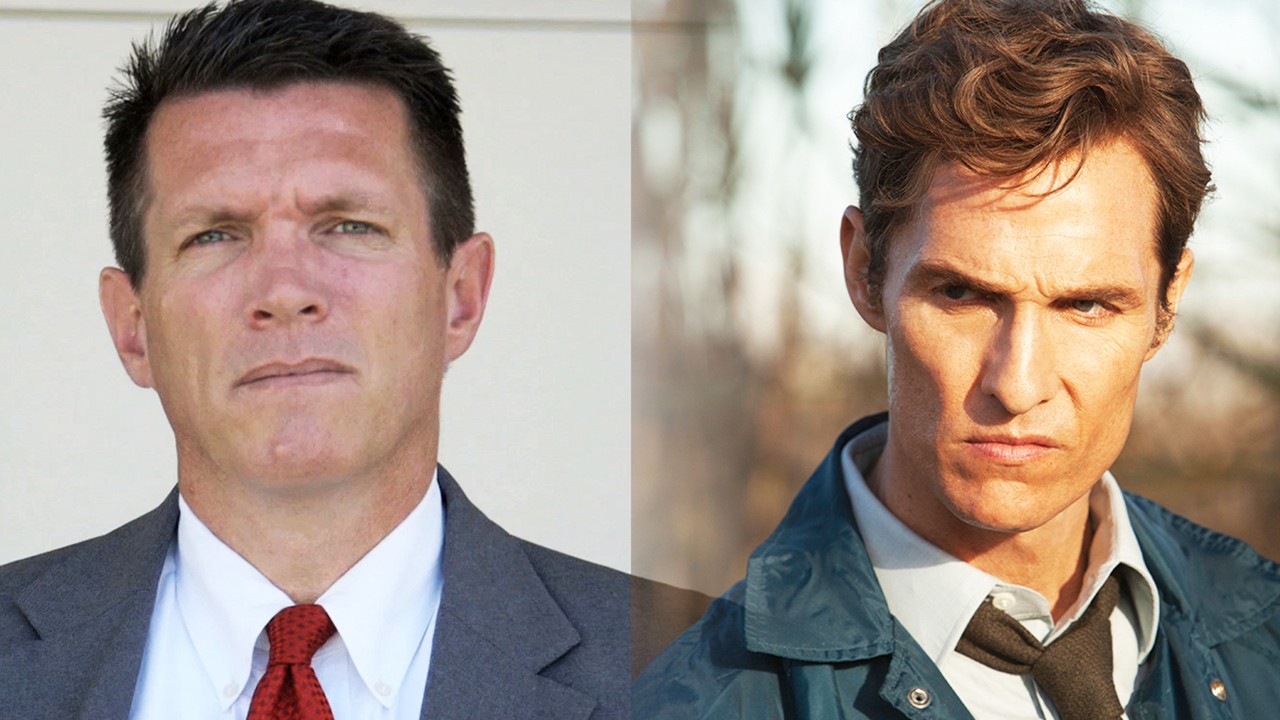Photo by Ray Mickshaw/FX
I wasn’t into “Ascent” the first time I watched it. Like the first two episodes of The Assassination of Gianni Versace, this one felt unfocused and overcrowded. The timeline was confusing: Am I crazy, or do we see Andrew Cunanan hanging out with Jeff Trail long before episode five has them meeting? There were too many characters, too many settings (San Diego, San Francisco, Milan, New York), too many moods. Writer Tom Rob Smith was trying to establish too many relationships too quickly. The juxtaposition of Cunanan’s life with Versace’s still felt forced.On my second viewing, though, what had looked like a sloppy mess started to reveal its surprisingly purposeful structure.The scenes in Versace’s studio, where an ailing Gianni attacks Donatella for her lack of ambition, then patiently collaborates on her first dress, then throws a tantrum when she asks him to tone down his designs to attract customers, are fairly simple. We watch her become a celebrity, as the garment they made together draws a crowd of photographers at Vogue’s 100th anniversary gala in 1993. (As you can see here, the real dress, with its sheer bodice, was even more risqué than it looked on the episode. And the Times article that compared “the Versace woman” to a dominatrix actually came out before the event.) In the end, when Gianni is sick again and Donatella takes the reins of the company, she’s not only confident, but loyal to her brother’s outré vision. This is the myth of how Gianni created Donatella in his own image.Cunanan’s story is creation myth, too—and the fragmented way in which it’s told subtly elucidates the differences between him and his final victim. Versace is the same person all the time: moody, stubborn, arrogant, defensive, but also brilliant, hard-working, nurturing, and inspiring. As we see in “Ascent,” which finally provides some insight into what he was like before he became violently unhinged, Cunanan adopts a different persona for everyone he meets. “What are you?” asks the woman at the escort agency. This is a crass query about his race and ethnicity, but when applied to Cunanan's personality and behavior, it’s also one of the show’s central questions.For his mother, he’s an angel and a monster and her only hope in the world, the golden child who promises to take her “sky high, where they all look down on us” but fractures her shoulder when she tries to hold him to it. For Lincoln Aston (more on him later), an older man with voracious appetites, he’s a charismatic connector. For Norman Blachford, a quieter friend of Aston’s, he’s the dream of a person to call home again, after the death of his longtime partner. But Cunanan steals that idyllic vision from David Madson after their first night together.We get to see Cunanan both lovestruck and as the beloved. He lets Aston and Blachford fight over him the night he snares them at the opera. They woo him with money, luxurious homes, and their adoration. Then he turns around and does the same with Madson when they meet—buying him a drink, inviting him to sit with his impressive friends, taking him back to a suite Aston paid for in the Mandarin Oriental. Even when he’s falling for someone, as he appears to be for Madson, Cunanan sees romance as transactional. If he can dazzle Madson with the smoke and mirrors of his lifestyle, maybe they can live happily ever after. As a result, we see Madson becoming entranced with the hotel room rather than the man who brought him there.This depiction of their relationship tracks with the impression Maureen Orth gives in Vulgar Favors, the book upon which The Assassination of Gianni Versace is based: Madson was reportedly attracted by Cunanan’s lavish spending. He accepted expensive gifts from his future killer despite his confusion about where all that wealth came from and his ambivalence towards his long-distance boyfriend. Orth judges Madson a bit harshly for this; she’s frustratingly tough on Cunanan’s gay friends and lovers throughout the book, framing them as fame whores, drug addicts, perverts, and, at best, materialistic, superficial flakes. It’s worth wondering whether money would play such a central role in her story if the couples in question were heterosexual. Still, the way the show (which does substantially moderate Orth’s judgmental tone) draws important parallels between Cunanan’s simultaneous romances without smacking us in the face with them is really skillful.Anyway, this isn’t a big episode for fact-checking—as I mentioned, the structure makes it hard to tell exactly how long a period it’s supposed to cover, but its representation of the characters and their relationships with Cunanan is solid. There is one character who deserves to be explored in greater depth, though…Lincoln AstonAston’s death, in the same episode where he’s introduced, might have come as a shock to anyone who thought the murder portion of this program had ended weeks ago. But it’s a true—well, mostly true—story, down to the name of the killer, Kevin Bond. And there’s more to it.As Orth reports, Cunanan met Aston sometime after Cunanan left San Francisco and returned to his mother’s house in 1991. The heir to an oil fortune, Aston had once been married and was now enjoying a second youth as a gay man in his 60s. Like Madson, he was an architect. While he patronized the arts and hosted classy soirées for an elite circle of older men, Aston also had ties to a wilder group who threw parties with “pool boys” and escorts. He and other men in his clique were often spotted out with Cunanan in San Diego’s gay neighborhood, Hillcrest, though Orth heard conflicting reports as to whether Cunanan was blatantly exchanging sex for money.One of Orth’s sources claims Aston was trying to free himself from Cunanan’s clutches around the time he was murdered, on May 19, 1995. Although the scene where Aston calls Cunanan out on his San Francisco tryst is fiction—Cunanan actually met Madson for the first time about six months after Aston’s death—mutual acquaintances did confirm to Orth that Aston had caught onto his young companion’s lies before the end of their relationship.So, what was going on in that bizarre scene where Cunanan quietly lets himself into Aston's house, watches Kevin Bond kill Aston, and then advises the killer to run? Could Cunanan possibly have had anything to do with that crime? Apparently not. Orth writes that, “Because Andrew bragged to people that he had been with Lincoln the night of his death and had found the body, many in Hillcrest still believe that he had something to do with his murder.” But when San Diego police reopened the case, after Cunanan had become a fugitive, they couldn’t find any evidence to connect him to it.Thankfully, the story doesn’t have quite as bleak an ending as Blachford and Cunanan’s conversation towards the end of the episode suggests. Although they predict that gay panic will be sufficient to get the confessed killer off the hook, after pleading guilty to the crime, Bond was convicted of second-degree murder and received a sentence of 15 years to life.Also? In case you didn’t catch it in the episode, when Cunanan convinced Blachford to relocate from Phoenix to San Diego, the hilltop mansion Blachford bought was Aston’s former home.Sign up for our newsletter to get the best of VICE delivered to your inbox daily.Follow Judy Berman on Twitter.
Apparently not. Orth writes that, “Because Andrew bragged to people that he had been with Lincoln the night of his death and had found the body, many in Hillcrest still believe that he had something to do with his murder.” But when San Diego police reopened the case, after Cunanan had become a fugitive, they couldn’t find any evidence to connect him to it.Thankfully, the story doesn’t have quite as bleak an ending as Blachford and Cunanan’s conversation towards the end of the episode suggests. Although they predict that gay panic will be sufficient to get the confessed killer off the hook, after pleading guilty to the crime, Bond was convicted of second-degree murder and received a sentence of 15 years to life.Also? In case you didn’t catch it in the episode, when Cunanan convinced Blachford to relocate from Phoenix to San Diego, the hilltop mansion Blachford bought was Aston’s former home.Sign up for our newsletter to get the best of VICE delivered to your inbox daily.Follow Judy Berman on Twitter.
Advertisement
Advertisement
Advertisement
Advertisement

